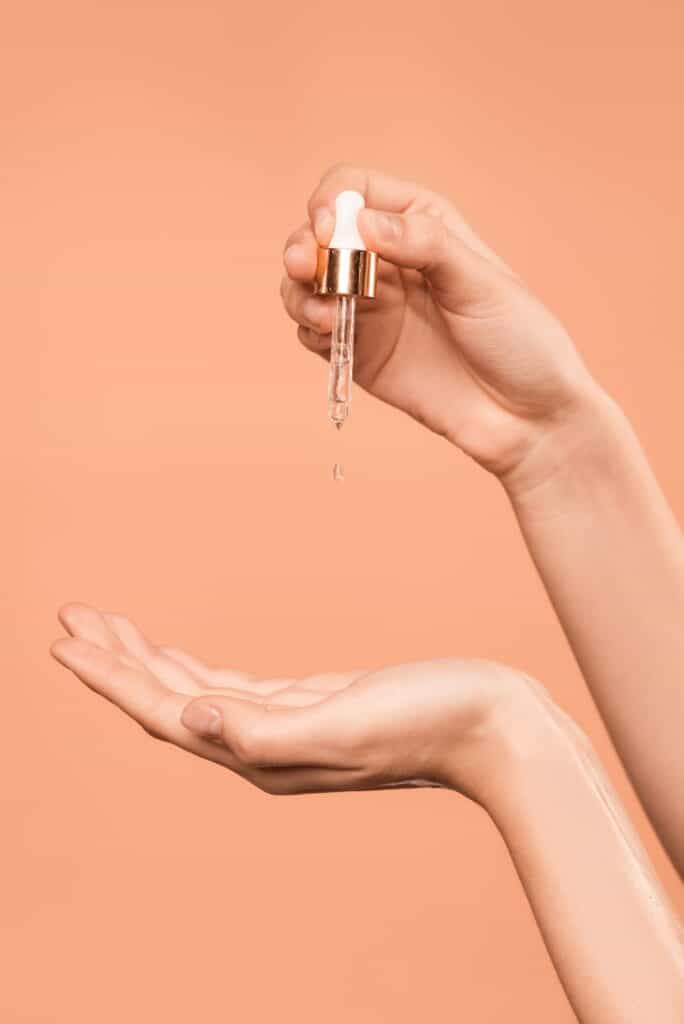In the world of skincare, the buzz around hyaluronic acid is undeniable. It’s a staple in most hydrating products, promising to deliver unparalleled moisture retention and hydration to the skin. However, not all types of hyaluronic acid are created equal. Let’s dive into the intricacies of the three main types: Hyaluronic Acid, Hydrolyzed Hyaluronic Acid, and Hyaluronic Acid Salts.
Understanding the Origins: Hyaluronic Acid
The “parent molecule” of the trio, Hyaluronic Acid, or hyaluronan, boasts the highest molecular weight.
Known for its exceptional moisture retention capabilities, it can hold up to 1000 times its weight in water. When applied topically, it acts as both an occlusive and a humectant, forming a protective film on the skin while attracting and holding onto water.

In injectable forms, high molecular weight Hyaluronic Acid not only takes longer to break down but also stimulates the production of additional hyaluronic acid, collagen, and elastin, promoting skin regeneration.
Related Post: Hyaluronic Acid Fillers, What You Need to Know
If you spot only “hyaluronic acid” on the ingredients list, chances are it’s the higher molecular weight variant.
Similar yet Different: Hydrolyzed Hyaluronic Acid
Enter Hydrolyzed Hyaluronic Acid, a child of the parent molecule.
The key distinction of hydrolyzed hyaluronic acid from other types of hyaluronic acid lies in its processing technique. Through hydrolysis, the polymer is broken down into specific size ranges, offering formulators more control over molecular weight. This controlled breakdown enhances penetration into the skin’s sublayers, providing deeper moisturization.

However, a note of caution: hydrolyzed hyaluronic acid in water-based formulations can undergo further breakdown over time, potentially transitioning to a lower molecular weight than the formulator intended.
The Lightweight Contender: Hyaluronic Acid Salts
Moving on to the lightweights, Hyaluronic Acid Salts, particularly sodium hyaluronate, take center stage. With the lowest molecular weight, they effortlessly blend into beauty formulations without causing significant viscosity changes. Found naturally in the body, these salts, when isolated from hyaluronic acid. Due to their size, they can penetrate down to the dermis like glycerin.
Related Post: Using Glycerin for Skin: Glycerin vs. Hyaluronic Acid
This is the only form of hyaluronic acid that has consistent scientific evidence of its ability to penetrate into the dermis.
Noteworthy is their stability in water-based formulations, degrading at a slower pace than regular hyaluronic acid or hydrolyzed hyaluronic acid.
For added stability and benefits, enter Hyaluronic Acid Salt Crosspolymers.
Stability Meets Performance: Hyaluronic Acid Salt Crosspolymers
Crafted for stability and performance, Hyaluronic Acid Salt Crosspolymers combine the stability of hyaluronic acid salts with the water retention and humectant properties of larger variants. This is one of the newer types of hyaluronic acid.
Though they may not penetrate as deep as hyaluronic acid salts, they offer a balance that brands and formulators find valuable.
Choosing the Right Hyaluronic Acid for Your Routine
In essence, all forms of hyaluronic acid share the ability to hydrate the skin. The critical factor lies in their penetration levels and water retention capacities. Tailoring your skincare routine to specific hyaluronic acid types can address your unique concerns effectively.

As you embark on your skincare journey, armed with the knowledge of types of hyaluronic acid, you’re better equipped to make informed choices. To delve deeper into the world of hyaluronic acid, explore the comprehensive series on this skincare powerhouse.
Remember, the key to radiant skin is not just about the products you use but understanding the science behind them.
For a deeper dive into the world of hyaluronic acid, explore the other articles in my series.
Complete Series on Hyaluronic Acid
- What Does Hyaluronic Acid Do: A Complete Guide
- What is Hyaluronic Acid?
- Hyaluronic Acid is a Bacteria By Product? Sources of Hyaluronic Acid
- When To Apply Hyaluronic Acid, Explained
- Hyaluronic Acid Fillers, What You Need to Know
Embark on a skincare journey that’s as unique as you are! Stay in the loop with our expert insights on hyaluronic acid and other skincare wonders. By subscribing to our newsletter, you’ll unlock a treasure trove of knowledge, exclusive tips, and product recommendations.
👉 Subscribe to our newsletter and join the growing community
But wait, there’s more! As a special thank you, gain access to our Free Skincare Routine Builder Guide – your personalized roadmap to radiant skin. Crafted with care and backed by science, this guide simplifies the complexities of skincare, ensuring you invest wisely in products that align with your goals.
👉Click here to download your Free Skincare Routine Builder Guide now!
Join our community of empowered women making informed choices for their skincare. Subscribe now and receive your free guide, because beauty begins with knowledge.
Ready to glow? Subscribe and download your guide today! 🌟✨

1 Comment